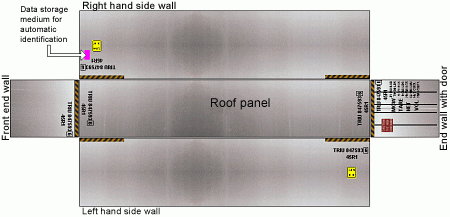 |
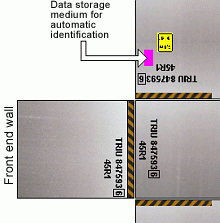 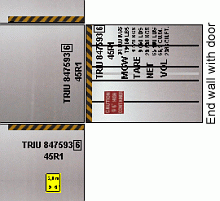 |
Top and selective enlargements below:
Arrangement of obligatory and optional markings |
The relevant standard allows for the areas of yellow and black stripes next to the corner castings to be reduced to a length of 300 mm (12").
It will be noted that the standard does not conform with the regulations in the German road traffic code and those of other countries, since in the standard the diagonal black and yellow stripes always run in the same direction.
 |
| Standard arrangement of black and yellow stripes |
 |
| More sensible, mirror-image arrangement of black and yellow stripes
|
 |
 |
| |
Marking error - the yellow and black stripes are absent at c |
 |
 |
| |
More sensible affixing of yellow and black stripes, which are present at c. Stripe b is mirrored relative to stripe a. |
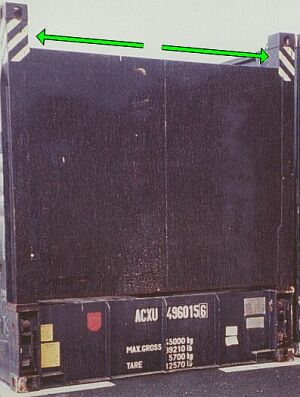 |
Non-standard but sensible Standard of black
and yellow stripes
|
 |
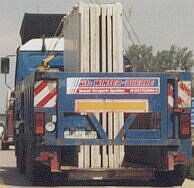 |
 |
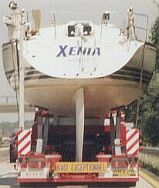 |
| |
Red and white plates: correct |
|
Red and white plates: incorrect
|
 |
 |
| |
Correctly affixed red and white warning plates |
Only this symmetrical arrangement of the warning plates, as provided for in the regulations, makes any sense.
This vehicle with correctly affixed warning is a particularly clear illustration.
 |
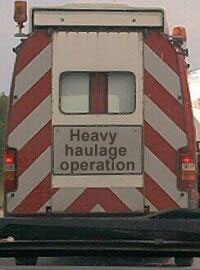 |
Correctly painted red
and white warning
|
 |
| Desirable arrangement of black and yellow warning markings |
It would be a good idea if this were taken into consideration when the standards are revised.
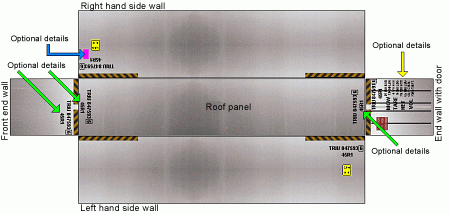 |
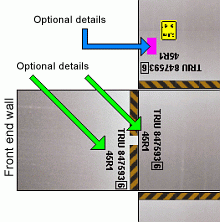 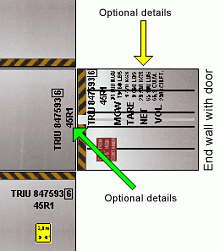 |
Top and selective enlargements below:
Optional details are indicated by colored arrows. |
The standards allow for optional affixing of size and type codes to the roof and front end wall (green arrows). The same applies to affixing a data medium for automatic identification (blue arrow) and to marking of the net cargo weight (yellow arrow).
|














